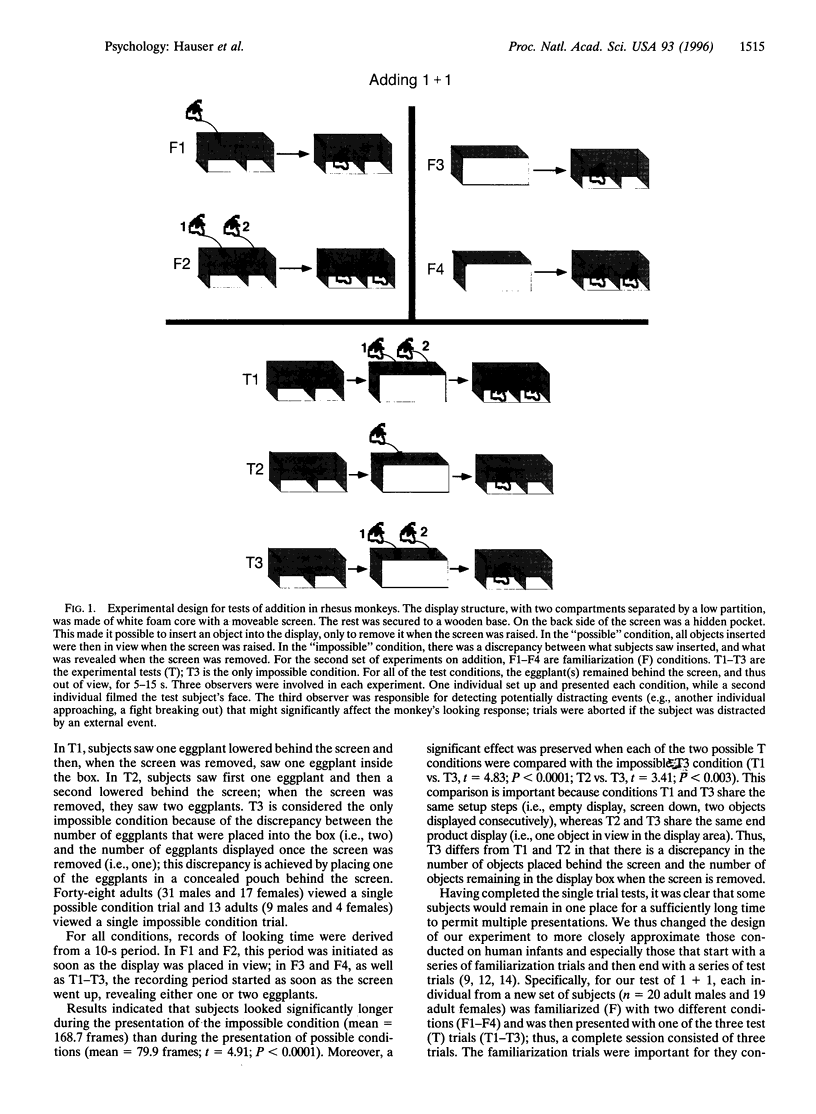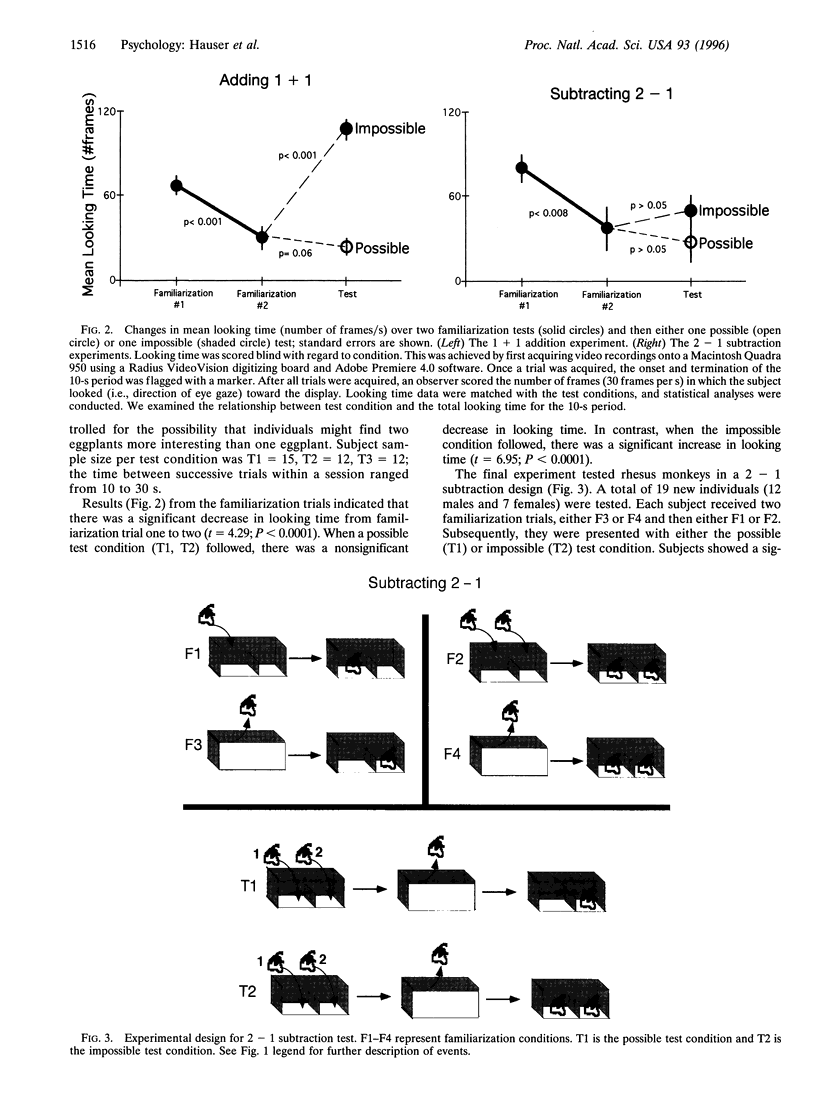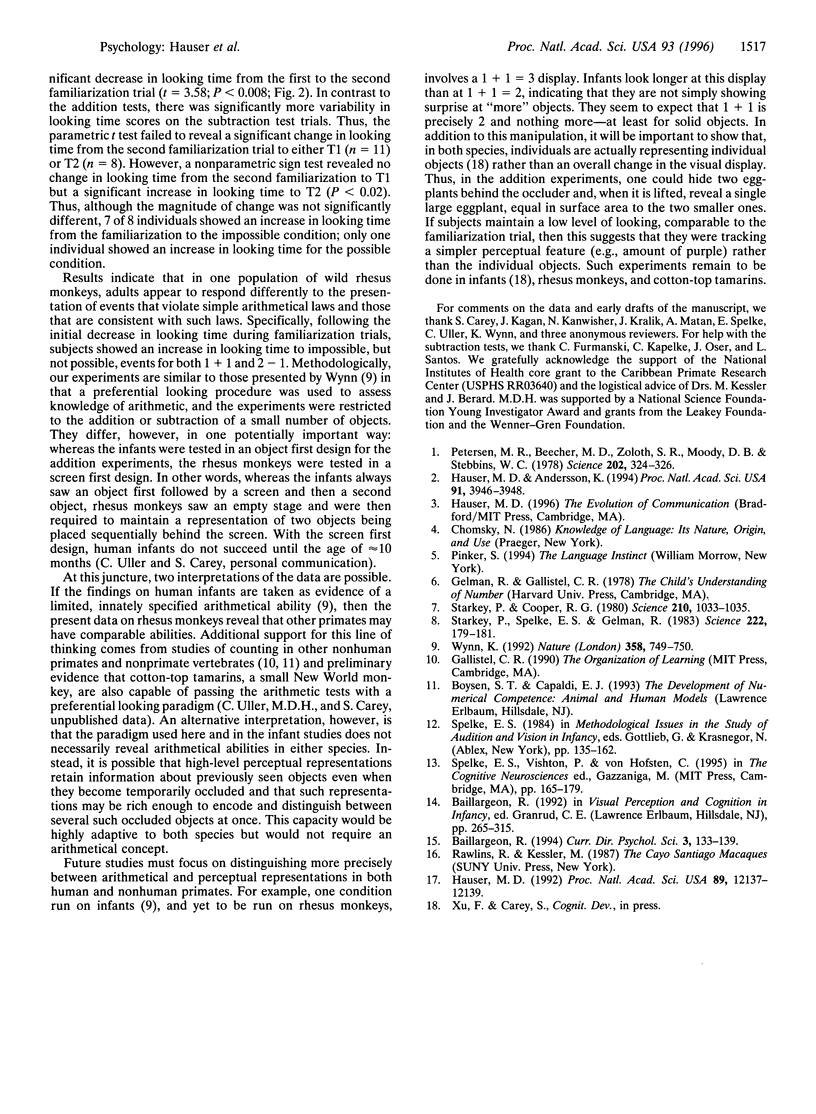Abstract
Research has demonstrated that human infants and nonhuman primates have a rudimentary numerical system that enables them to count objects or events. More recently, however, studies using a preferential looking paradigm have suggested that preverbal human infants are capable of simple arithmetical operations, such as adding and subtracting a small number of visually presented objects. These findings implicate a relatively sophisticated representational system in the absence of language. To explore the evolutionary origins of this capacity, we present data from an experiment with wild rhesus monkeys (Macaca mulatta) that methodologically mirrors those conducted on human infants. Results suggest that rhesus monkeys detect additive and subtractive changes in the number of objects present in their visual field. Given the methodological and empirical similarities, it appears that nonhuman primates such as rhesus monkeys may also have access to arithmetical representations, although alternative explanations must be considered for both primate species.
Full text
PDF



Selected References
These references are in PubMed. This may not be the complete list of references from this article.
- Hauser M. D., Andersson K. Left hemisphere dominance for processing vocalizations in adult, but not infant, rhesus monkeys: field experiments. Proc Natl Acad Sci U S A. 1994 Apr 26;91(9):3946–3948. doi: 10.1073/pnas.91.9.3946. [DOI] [PMC free article] [PubMed] [Google Scholar]
- Hauser M. D. Costs of deception: cheaters are punished in rhesus monkeys (Macaca mulatta). Proc Natl Acad Sci U S A. 1992 Dec 15;89(24):12137–12139. doi: 10.1073/pnas.89.24.12137. [DOI] [PMC free article] [PubMed] [Google Scholar]
- Petersen M. R., Beecher M. D., Zoloth S. R., Moody D. B., Stebbins W. C. Neural lateralization of species-specific vocalizations by Japanese macaques (Macaca fuscata). Science. 1978 Oct 20;202(4365):324–327. doi: 10.1126/science.99817. [DOI] [PubMed] [Google Scholar]
- Starkey P., Cooper R. G., Jr Perception of numbers by human infants. Science. 1980 Nov 28;210(4473):1033–1035. doi: 10.1126/science.7434014. [DOI] [PubMed] [Google Scholar]
- Starkey P., Spelke E. S., Gelman R. Detection of intermodal numerical correspondences by human infants. Science. 1983 Oct 14;222(4620):179–181. doi: 10.1126/science.6623069. [DOI] [PubMed] [Google Scholar]
- Wynn K. Addition and subtraction by human infants. Nature. 1992 Aug 27;358(6389):749–750. doi: 10.1038/358749a0. [DOI] [PubMed] [Google Scholar]


